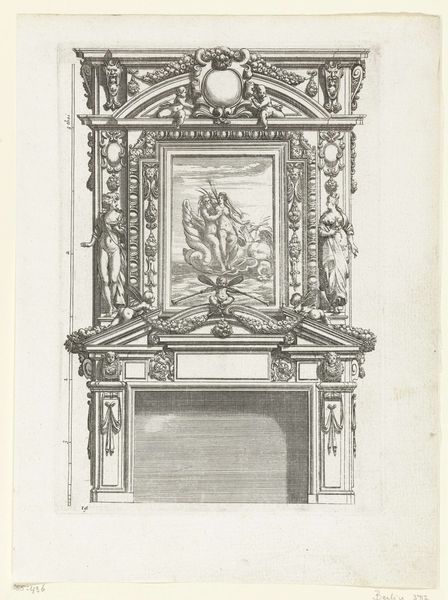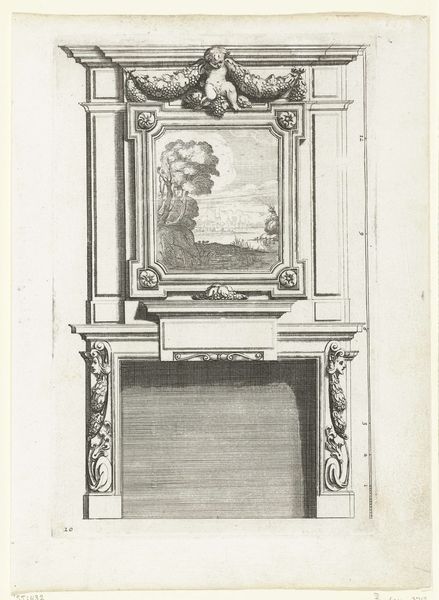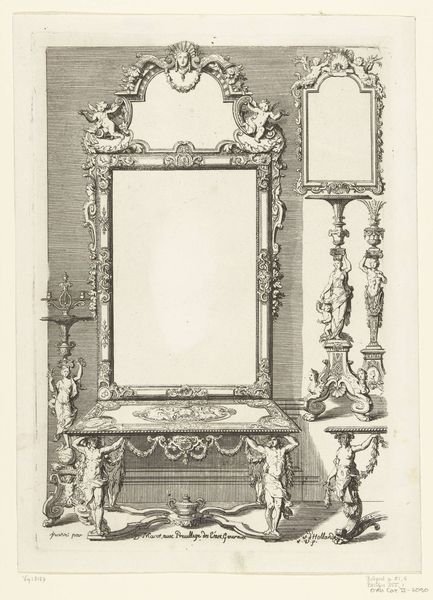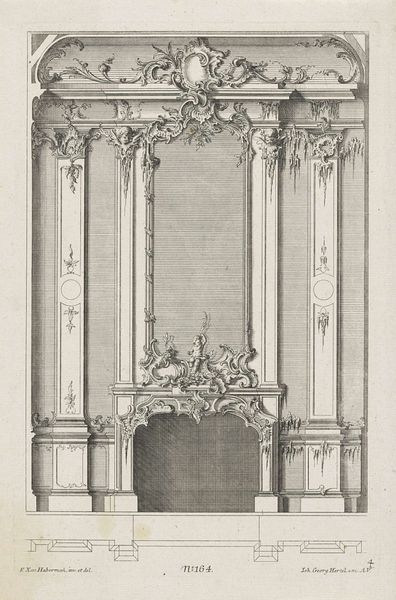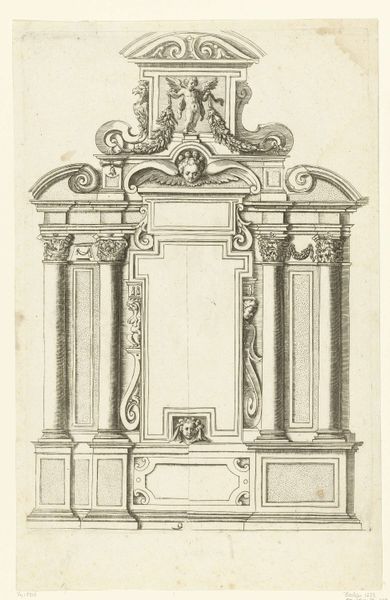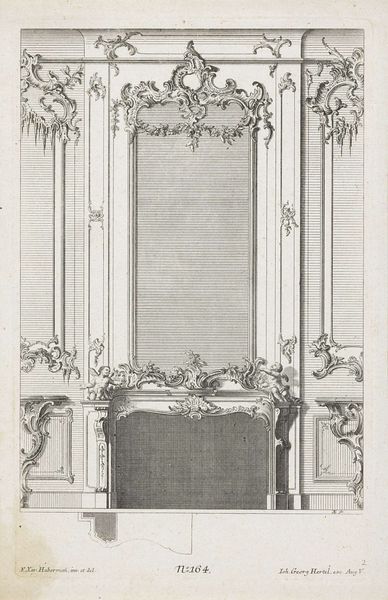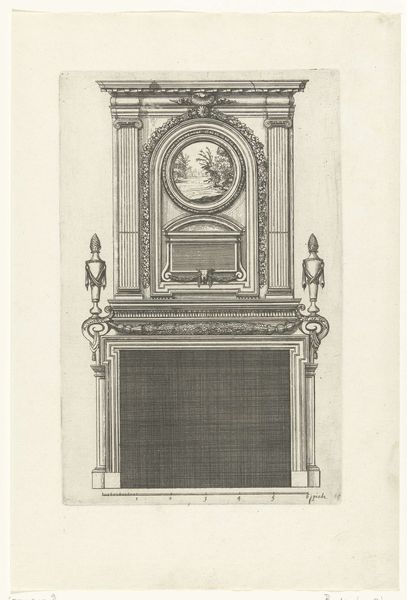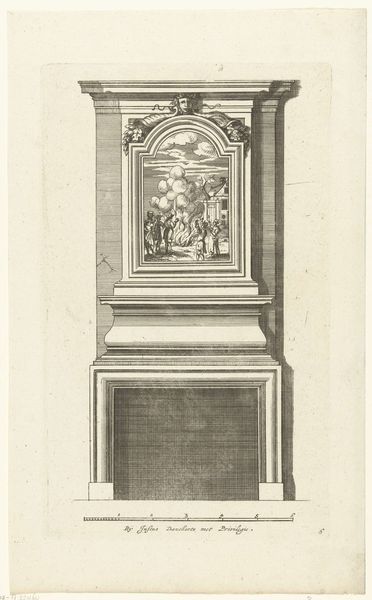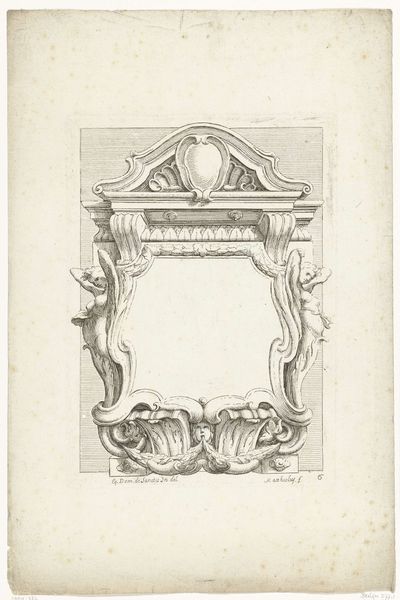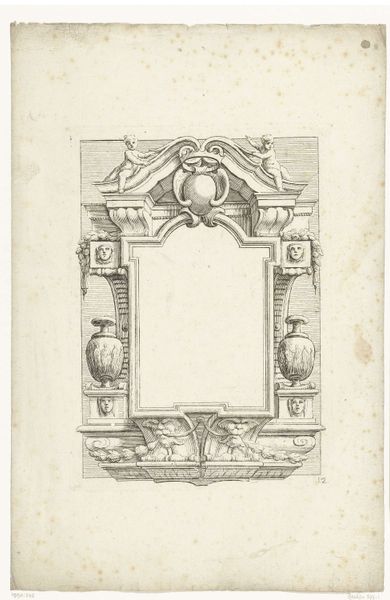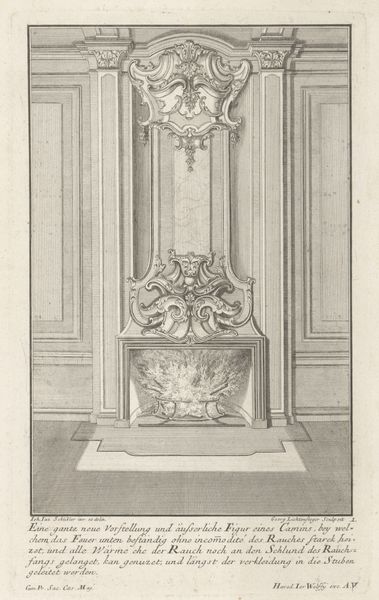
drawing, print, engraving, architecture
#
drawing
#
baroque
# print
#
form
#
line
#
engraving
#
architecture
Dimensions: height 205 mm, width 136 mm
Copyright: Rijks Museum: Open Domain
Editor: Here we have "Onderboezem, schacht gedecoreerd met spiegel," or Chimneypiece, shaft decorated with a mirror, created before 1643 by Abraham Bosse. It's an engraving, currently held at the Rijksmuseum. It feels so precise, like an architect's blueprint. What strikes you when you look at this work? Curator: The level of detail is indeed remarkable, especially considering its purpose as a design blueprint. To me, it speaks volumes about the material aspirations and labor hierarchies of the 17th century. Look at the ornamentation – the cherubs, the foliage. Who was crafting these elements? Were they seen as artists, or merely skilled laborers? The drawing is an engraving; an early form of mechanical reproduction used to disseminate a vision of elite luxury. What impact did it have on access and consumption of such objects? Editor: So you're saying that even a drawing of a chimneypiece can tell us about class and production? It seems so removed from the actual physical work. Curator: Exactly. The drawing itself is a product of labor. The engraver, Bosse, had to possess immense technical skill, turning the architect's vision into something reproducible. Consider how such a print might function within workshops. It's a standard of production but it also sets parameters and constraints for other materials, stone or plaster maybe? Editor: That's a perspective shift! It also appears as a document about the organization of labor. Who designs, who builds and what the relationship is. So, what did people make of it back then, I wonder? Curator: Precisely! This piece reveals those questions. How consumers came to aspire for items as grand and decorative as the chimney in Bosse’s image through mass-produced artwork is what stands out to me most. Editor: That’s fascinating. I had never thought of design drawings this way before, more than just preparation and into thinking about production as a cultural construct. Curator: It shows you the power that examining materials, in this case even the printmaking process itself, gives you as a window onto the culture that produced and consumed it.
Comments
No comments
Be the first to comment and join the conversation on the ultimate creative platform.

